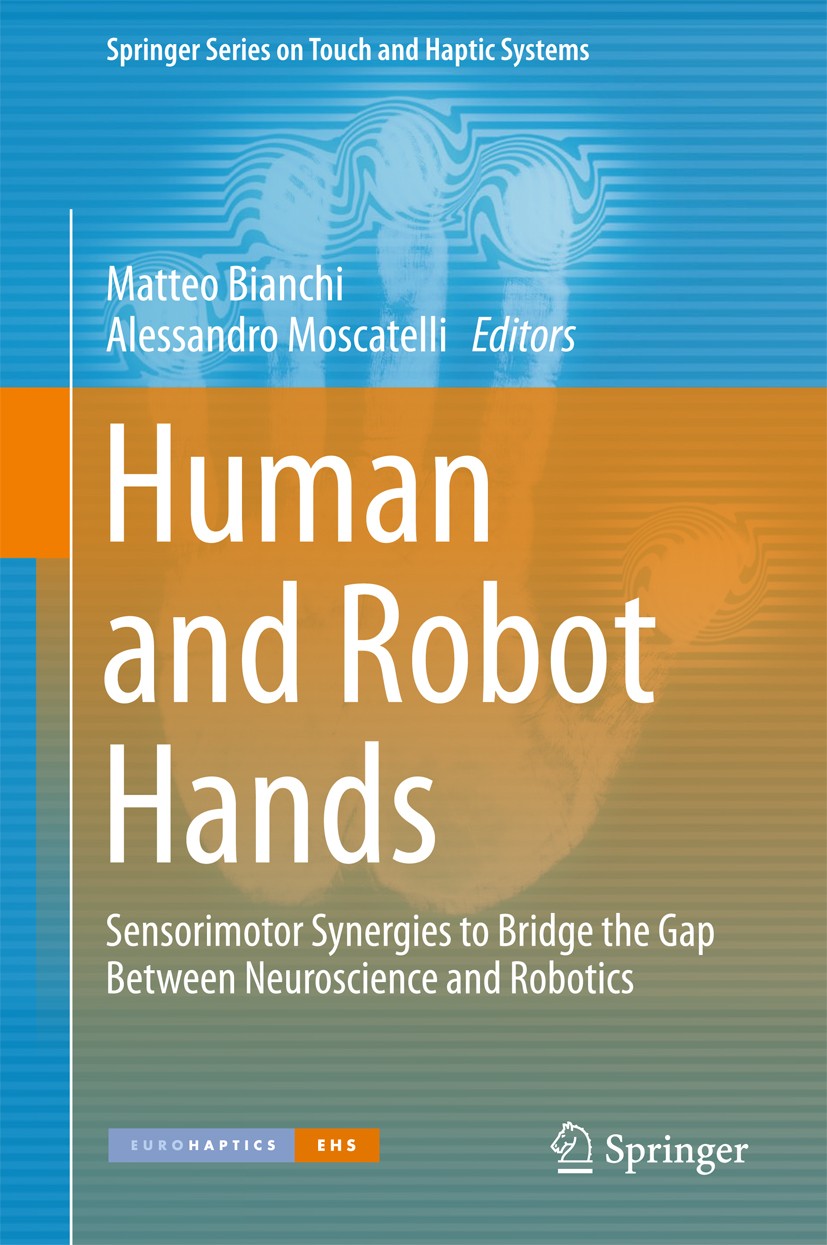| 书目名称 | Human and Robot Hands |
| 副标题 | Sensorimotor Synergi |
| 编辑 | Matteo Bianchi,Alessandro Moscatelli |
| 视频video | http://file.papertrans.cn/430/429600/429600.mp4 |
| 概述 | Presents an integrated approach between neuroscience and robotics to understand the complex issue of sensorimotor control of the hand.Enriches the understanding of synergies as a framework for an effi |
| 丛书名称 | Springer Series on Touch and Haptic Systems |
| 图书封面 |  |
| 描述 | .This book looks at the common problems both human and robotic hands encounter when controlling the large number of joints, actuators and sensors required to efficiently perform motor tasks such as object exploration, manipulation and grasping. The authors adopt an integrated approach to explore the control of the hand based on sensorimotor synergies that can be applied in both neuroscience and robotics. Hand synergies are based on goal-directed, combined muscle and kinematic activation leading to a reduction of the dimensionality of the motor and sensory space, presenting a highly effective solution for the fast and simplified design of artificial systems...Presented in two parts, the first part, .Neuroscience,. provides the theoretical and experimental foundations to describe the synergistic organization of the human hand. The second part, .Robotics, Models and Sensing Tools., exploits the framework of hand synergies to better control and design robotic hands and haptic/sensing systems/tools, using a reduced number of control inputs/sensors, with the goal of pushing their effectiveness close to the natural one...Human and Robot Hands .provides a valuable reference for students, |
| 出版日期 | Book 2016 |
| 关键词 | Robotic hands; Sensing Systems; Human Touch; Sensing Modeling; Human Hand Modeling |
| 版次 | 1 |
| doi | https://doi.org/10.1007/978-3-319-26706-7 |
| isbn_softcover | 978-3-319-80001-1 |
| isbn_ebook | 978-3-319-26706-7Series ISSN 2192-2977 Series E-ISSN 2192-2985 |
| issn_series | 2192-2977 |
| copyright | Springer International Publishing AG, part of Springer Nature 2016 |
 |Archiver|手机版|小黑屋|
派博传思国际
( 京公网安备110108008328)
GMT+8, 2025-11-14 20:01
|Archiver|手机版|小黑屋|
派博传思国际
( 京公网安备110108008328)
GMT+8, 2025-11-14 20:01


